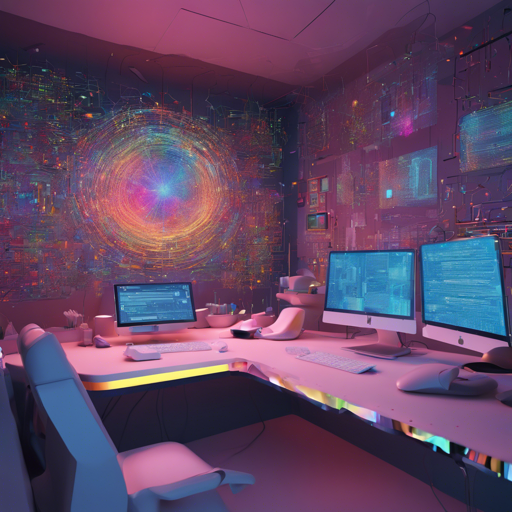In the world of advanced AI techniques, the ability to generate 3D assets from text descriptions signifies a monumental leap. The innovative framework, GaussianDreamer, utilizes both 2D and 3D diffusion models to achieve this. Let’s explore how to dive into this cutting-edge technology to make 3D object creation faster and more efficient than ever!
Getting Started
Before we jump into generating 3D assets, you need to install GaussianDreamer along with its dependencies. This section will guide you through the installation process step by step.
Installation Instructions
- First, you need to install 3D Gaussian Splatting and Shap-E.
- Run the following commands in your terminal:
pip install torch==2.0.1+cu117 torchvision==0.15.2+cu117 torchaudio==2.0.2 --index-url https://download.pytorch.org/whl/cu117
pip install ninja
pip install -r requirements.txt
git clone https://github.com/hustvl/GaussianDreamer.git
cd GaussianDreamer
pip install .
pip install .gaussiansplattingsubmodulesdiff-gaussian-rasterization
pip install .gaussiansplattingsubmodulessimple-knn
git clone https://github.com/openai/shap-e.git
cd shap-e
pip install -e .Quickstart Guide
Now that you have installed everything, let’s proceed with generating some 3D objects!
Text-to-3D Generation
- For a quick text-to-3D generation, use the command:
python launch.py --config configs/gaussiandreamer-sd.yaml --train --gpu 0 system.prompt_processor.prompt="a fox"Text-to-Avatar Generation
- If you want to create an avatar, run the following command:
python launch.py --config configs/gaussiandreamer-sd.yaml --train --gpu 0 system.prompt_processor.prompt="Spiderman stands with open arms" system.load_type=1Understanding the Code Architecture
Think of 2D diffusion models as skilled artists sketching scenes based on detailed descriptions (text prompts) but struggling to maintain 3D depth. In contrast, 3D diffusion models are like sculptors who can create realistic objects but need plenty of resources (3D data) to do so effectively.
GaussianDreamer effectively merges these two skill sets. The 3D diffusion model lays down the initial structure (the clay), while the 2D diffusion model adds intricate details (the paint). This combination allows for efficient, high-quality 3D model generation!
Troubleshooting Common Issues
While using GaussianDreamer, you might run into some common issues. Below are some troubleshooting tips:
- Installation Problems: Ensure that all dependencies were cloned and installed successfully. Re-run the installation commands if any were missed.
- GPU Errors: Make sure that the GPU is set up correctly for use with PyTorch. Check your CUDA version and compatibility.
- Slow Generation Times: If the generation seems slow, verify that you’re running the model on a compatible GPU with sufficient memory.
- For persistent issues or any errors, reach out for help. For more insights, updates, or to collaborate on AI development projects, stay connected with fxis.ai.
Conclusion
Laboring tirelessly between the realms of 2D artistry and 3D modeling, GaussianDreamer stands out as a pioneering tool that greatly accelerates the generation of 3D assets from text inputs. With its fast and efficient approach, it opens the door to innovative applications in gaming and simulations.
At fxis.ai, we believe that such advancements are crucial for the future of AI, as they enable more comprehensive and effective solutions. Our team is continually exploring new methodologies to push the envelope in artificial intelligence, ensuring that our clients benefit from the latest technological innovations.
Stay Updated!
Keep a lookout for future updates, enhancements, and tutorials on GaussianDreamer and related projects. Happy generating!

